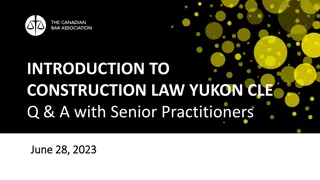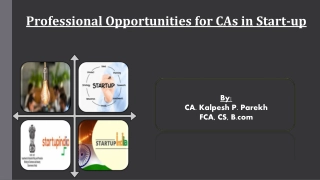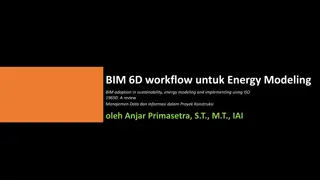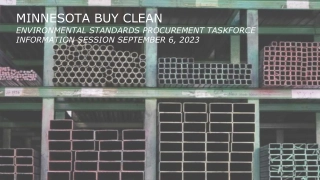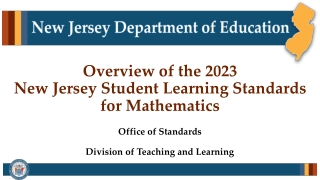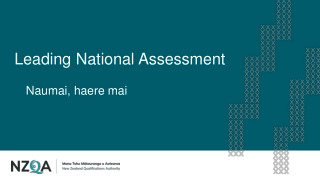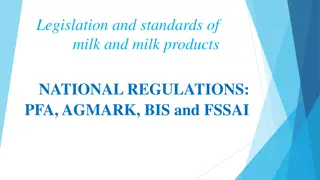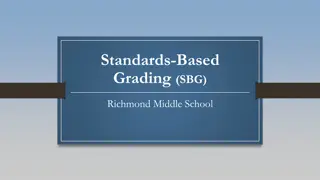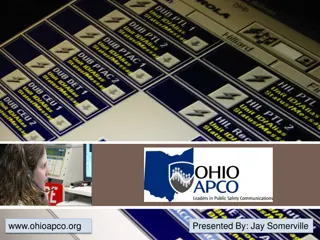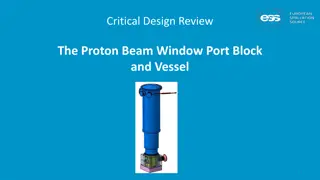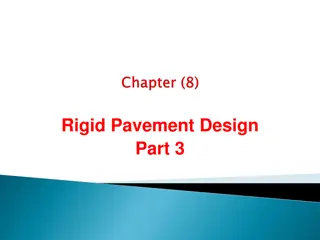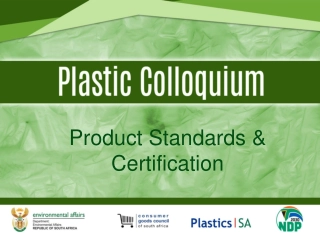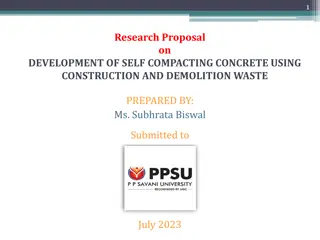Advancing CAS-ASD Standards: Design & Construction Guide G-7375
Explore the evolution of CAS-ASD standards through technological advancements, the rationale for adopting standards and guidelines, and the benefits they offer in ensuring consistency, efficiency, and knowledge transfer within the Centre for Accelerator Science. Embrace diverse solutions and foster innovation while maintaining quality systems and supporting development in this insightful presentation.
Download Presentation
Please find below an Image/Link to download the presentation.
The content on the website is provided AS IS for your information and personal use only. It may not be sold, licensed, or shared on other websites without obtaining consent from the author. Download presentation by click this link. If you encounter any issues during the download, it is possible that the publisher has removed the file from their server.
Presentation Transcript
Development of CAS-ASD Standards CAS Design & Construction Guide G-7375 Presented on Behalf of CAS-ASD David Button dbu@ansto.gov.au
Why are we giving this talk? Centre for Accelerator Science (CAS) origins date back to 1964 when ANSTO was known as the Australian Atomic Energy Commission AAEC. 1964 2004
The technological expanse The life time of electrostatic accelerators typically branches over decades. Facilities may have complete staff turn over multiple time in their lifetime. Capability development is an ongoing process. Technologies available may have matured or advanced over time, and new products available to our market place. Some technologies or products may have discontinued. Regulation requirements may change, or required to meet standards. Diverse teams can also mean diverse solutions which may have pros and cons.
Why the need to move to standards and guidelines? Typical business response would be: Reducing Costs Efficiency Mitigating Risk Consistency Customer Confidence Uniformity Eliminate Trade Borders Universal Vendor Requirements Syntax Error Line 42
Why the need to move to standards and guidelines? We want our facilities Mutual understood by group members (Unification across disciplines where possible) Serviceable by more than one staff member (Reduce unicorns) Predictability,and prescriptive where possible (Safety, Maintainability, Harmonization) Knowledge transference to new group members easily and rapidly to become effective Simplification of range of solutions to support Automate processes where possible Reproducibility (Supports quality systems)
More than one way to skin a cat! Choice and Decision ..
Standard and guideline.good intensions Not a tool to crush innovation Not a comment against anyone's competency or expertise Not to undermined anyone's value or security Not to take away anyone s input Not to suppress anyone s development This Presentation You
Covers the Following Areas Electrical Information Technology Control Systems Vacuum Compressed Gases Chilled Water Radiation Racks & Cabinets Labels & Signs Indicator Lights Paint Nomenclature Documentation Design Change Approval
Functional Locationssetting the scene A-B-053X-06MV-B51BA SURFACE ENGINEERING BEAMLINE FUNCTIONAL LOCATION DESCRIPTION B53 A-B-053X-06MV-B61BA CHANELLING & NRA BEAMLINE A-B-053X-01MV VEGA ACCELERATOR A-B-053X-06MV-B71BA MICROBE BEAMLINE A-B-053X-01MV-S1SNIC SNICS ION SOURCE A-B-053X-06MV-LEII LOW ENERGY ION IMPLANTER A-B-053X-01MV-01LEBL LOW ENERGY BEAMLINE -SNICS EXIT TO LOW ENERGY FLANGE A-B-053X-06MV-CONTRM CONTROL ROOM A-B-053X-01MV-ACCEL ACCELERATOR VESSEL A-B-053X-10MV ANTARES ACCELERATOR A-B-053X-01MV-02HEBL HIGH ENERGY BEAMLINE - HIGH ENERGY FLANGE TO 120 MAGNET A-B-053X-10MV-S1X846 846 ION SOURCE - TO 90 MAGNET ENTRY A-B-053X-01MV-CONTRM CONTROL ROOM A-B-053X-10MV-S2X853 846 ION SOURCE - TO 45 MAGNET ENTRY A-B-053X-01MV-03HEBL HIGH ENERGY BEAMLINE - FROM 120 MAGNET FIX A-B-053X-10MV-01 LOW ENERGY BEAMLINE - HIGH ENERGY FLANGE TO 55 A-B-053X-06MV SIRIUS ACCELERATOR A-B-053X-10MV-S3 ALPH ALPHATROSS ION SOURCE - TO 45 MAGNET ENTRY A-B-053X-06MV-S1SNIC SNICS ION SOURCE - TO 90 MAGNET ENTRY A-B-053X-10MV-ACCEL ACCELERATOR VESSEL A-B-053X-06MV-S3DUOP DUOPLASMATRON ION SOURCE - TO 30 MAGNET ENTRY A-B-053X-10MV-02 HEBL HIGH ENERGY BEAMLINE, HIGH ENERGY FLANGE TO 55 MAGNET EXIT A-B-053X-06MV-01LEBL LOW ENERGY BEAMLINE - SNICS EXIT TO 90 INJECTION MAGNET A-B-053X-10MV-03 HEBL HIGH ENERGY BEAMLINE-90 MAGNET TO SWITCH MAGNET EXIT A-B-053X-06MV-S4 ALPH ALPHATROSS ION SOURCE - TO 30 MAGNET ENTRY A-B-053X-10MV-04AMS ACTINIDE BEAMLINE A-B-053X-06MV-02LEBL LOW ENERGY BEAMLINE - 30 INJECTION MAGNET TO LOW ENERGY A-B-053X-10MV-B31BA MICROPROBE BEAMLINE A-B-053X-06MV-ACCEL ACCELERATOR VESSEL A-B-053X-10MV-B51BA TOF BEAMLINE A-B-053X-06MV-03HEBL HIGH ENERGY BEAMLINE, HIGH ENERGY FLANGE TO IBA 90 MAGNET A-B-053X-10MV-A6AMS GFM BEAMLINE A-B-053X-06MV-04HEBL HIGH ENERGY BEAMLINE, AMS 90 MAGNET EXIT TO I MAGNET A-B-053X-10MV-A91BA IRRADIATION BEAMLINE A-B-053X-06MV-05HEBL HIGH ENERGY BEAMLINE, IBA 90 MAGNET EXIT TO I MAGNET A-B-053X-10MV-A12AMS BERYLIUM BEAMLINE A-B-053X-06MV-A2AMS AMS BEAMLINE A2 A-B-053X-10MV-TCQUI TARGET CELL EQUIPMENT & RACKS A-B-053X-06MV-A3AMS AMS BEAMLINE A3 A-B-053X-10MV-CONTRM CONTROL ROOM A-B-053X-06MV-A5AMS AMS BEAMLINE A5
Controls aspects of guidelines Information Technology Control Systems Network Devices EPICS IP Address PV Names Host Name PLC Domain Name Device Identification Labelling Communications Optic Fibre Copper Identification Network Identification Colours Passwords
Prescriptive PV names Example of Legacy EPICS PV s c14smfco c14tgtfcc hefc1c hefc1i antares:gfm:quad1:remLocStatus antares:gfm:quad1:setCurrent antares:gfm:quad2:Iout antares:gfm:quad2:Iset tapss tasdi tstdno tstupo Antares_HighEnergy_Pressure_Value Antares_PressureVessel_MassConversion_AvMass Antares_PressureVessel_MassConversion_AvMass24Hr Antares_PressureVessel_MassConversion_Mass
Example PV: SIRIUS:B5IBA:BL1:BLV1:Status_C Parameter
Standardised equipment codes Appendix A: Device G-7375 This document is to be used in conjunction with G-7375 CAS Design & Construction Guide to generate all device names The preference for naming equipment should be what the equipment is, rather that what it does. Codes should always be used in tag names. If there is no code the description is to be used. Vacuum Beam Control & Measureing Unclassified I/O xxxxxx Code Description Code BPM QS BIA DSX DSY EQPS ELN ESA ELS EQ ESC ESXY ESX ESY FC FCV MAG MPS MQ MQPS MSX MSY EXB Description Code BLW ESPB IS ITX LT PS PI PT TI TSW TT TX Description Code plc crio ts pxi hmi osc usbhub Description Code Description VBG BLV CCG CP FLP FLV IGC MV NRV PGV RLP RLV TP TPC TPV VGV VGC VPG VV WRG Baratron Gauge Beamline Gate Valve Cold Cathode Gauge Cryogenic Pump Foreline Pump Foreline Valve Ionization Gauge Cathode Mass Flow Valve Non Return Valve Pumping Gate Valve Roughing Line Pump Roughing Line Valve Turbo Molecular Pump Turbo Pump Controller Turbo Pump Valve Vacuum Gate Valve Vacuum Gauge Controller Vacuum Pirani Gauge Venting Valve Wide Range Gauge Beam Profile Monitor Beam Quad Slits X and Y Deck Bias PS Double Slits - X Double Slits - Y Eectrostatic Quadrupole Power Supply Einzel Lens Electro Static Analyser Electron Suppressor Electrostatic Quadrupole Electrostatic Scanner Electrostatic Steerer X-Y Electrostatic X-Steerer Electrostatic Y-Steerer Faraday Cup Faraday Cup Viewer Magnet Magnet Power Supply Magnetic Quadrupole Magnetic Quadrupole Power Supply Magnetic X-Steerer Magnetic Y-Steerer Wien Filter Blower Gas Dryer Circulator Emergency Stop Push Button Ion Source Isolation Transformer Level Transmitter Power Supply Pressure Indicator Pressure Transmitter Temperature Indicator Temperature Switch Temperature Transmitter Transformer Programmable Logic Controller CompactRIO terminalserver PCI eXtensions for Instrumentation Human Machine Interface oscilloscope USB Hub CoronaPoints Grid HEChain HEColumn LEChain LEColumn
Finial brief thoughts. Having this guide is helping unify our group with common language and approach to the facilities. The document has undergone is first revision which has benefited from wider input of the documents users. Our group is happy to share and discuss our standards and guidelines with those who are interested. We look forward to being able to have more productive conversations in the future with members of this community as we improve our understanding of each other through interactions such as this meeting.
W e need you to help fight U nicorns! Thank you









